Introduction

When you consider buying a 150cc commuter motorcycle in India, it's inevitable that the Bajaj Pulsar will end up in your shortlist. It has always been an aspirational motorcycle within the attainable spectrum of ownership. And the sales figures prove that 16 years on, the Pulsar 150 still is the country’s favourite 150cc motorcycle.
However with the diversification of the market space in the last few years, Bajaj has been missing out the action from the rapidly growing premium commuter segment. With the Yamaha FZ-S leading the pack, the segment accounts for 24 per cent of the sales in the premium commuter market space. And that is where the new Pulsar NS160 comes in. Sitting bang in between the Pulsar 150 and the Pulsar 180, the Pulsar NS160 rubs shoulders with the Yamaha FZ-S FI, Honda CB Hornet 160R, Suzuki Gixxer and the TVS Apache RTR 160.

What's new?

There is, at first glance, much about the Pulsar NS160 to confuse it with the Pulsar NS200. And that is not a bad thing at all. It gives the Pulsar NS160 the look of a larger capacity motorcycle than it actually is. The proportions are just right and the matte grey paint scheme makes it stand out in a crowd. The points of distinction are the ‘160’ decal in the tank shroud, skinnier tyres, thinner front forks and the drum brake for the rear wheel.

At the heart of the Pulsar NS160 is a revised 160cc oil-cooled four-valve single-cylinder DTS-i engine. The most powerful engine in the class, it develops 15.3bhp and Nm of torque and is mated to a five-speed transmission. The tyre profile has been brought down from 100/80 front and 130/70 rear in the Pulsar NS200 to 80/100 front and 110/80 rear.

The ride feel

The skinnier tyres and the front forks have made a remarkable difference in the way the Pulsar NS160 handles. While the Pulsar NS200 felt top heavy, the Pulsar NS160 turns in at the drop of a hat. It feels nimble and light on its feet through traffic as well. The taut front suspension and sharp rake gives the Pulsar NS160 an eagerness to be flicked into a corner. It holds its line well irrespective of the minor bumps you might encounter mid-corner. The ride has been softened over the Pulsar NS200 to make it better for commutes, but it still is right on the edge of what you can call comfortable. Also, the turning radius is still quite large, and the Gixxer will eat it raw in tight urban spaces.

The engine however, fails to reproduce the excitement of the suspension setup. Bajaj says the flat torque curve was designed to make the Pulsar NS160 more usable. And within the city, it is. Whack open the throttle at any given moment and you are met with enough grunt for a quick overtake. There is a burst of torque at around 3,500 and the engine keeps pulling cleanly until 8,000rpm. Once you get past 5,000rpm, there is a healthy dose of vibrations through the handlebars, fuel tank and the foot pegs, and even the engine sounds stressed.

Bajaj has always been good at configuring front brakes, and the Pulsar NS160 is no exception. The 240mm disc brake has a good initial bite, feel and progression.
The raised clip-on handlebars offer an upright riding position, with the rear set foot pegs and sculpted fuel tank giving it a sporty character. Even the seat is firm and comfortable. However, one thing that will bother sporty riders is pillion footpeg hangers. They make you go pigeon-toed because they foul with the inside of the ankle if you try to ride with your toes on the ‘pegs, which gets really uncomfortable.

Verdict

At Rs 80,648 (ex-showroom), the Pulsar NS160 is priced lower than the Gixxer, FZ-S FI and the CB Hornet 160R, though it is more expensive than the Apache RTR 160. With the Pulsar NS160, Bajaj has tried to combine the sporty character of a Pulsar NS200 with the laid-back demeanour of Pulsar 150. As such, the Pulsar NS160 will serve adequately for your daily grind, while the suspension and brake setup make it an entertaining motorcycle to ride around the twisties. However, the engine leaves a lot more to be desired. We will, however, have it back for a full comparison soon, to see how it stacks up with its rivals.

Photography by Abhishek Nigam
Gallery
1/33
Bajaj Pulsar NS160 Brakes
Double Tap to Zoom
























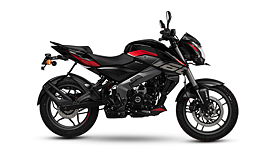
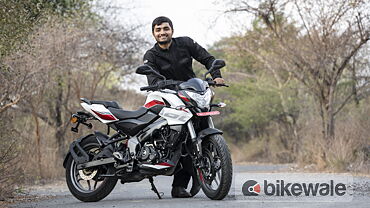



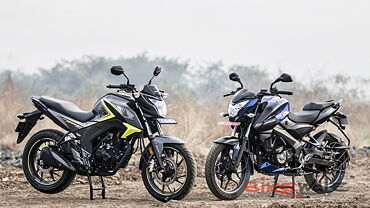
















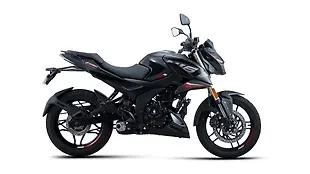
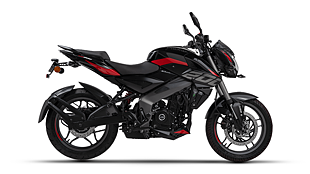
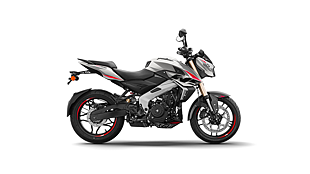





![KTM 390 Adventure X [2025] KTM 390 Adventure X [2025]](https://imgd.aeplcdn.com/272x153/n/cw/ec/190885/390-adventure-x-2025-right-side-view.jpeg?isig=0&q=80)